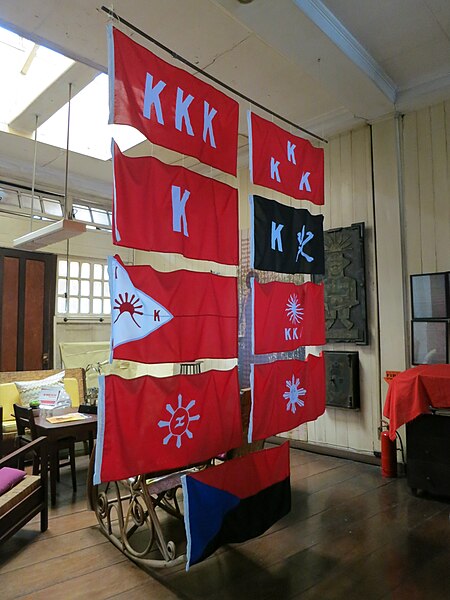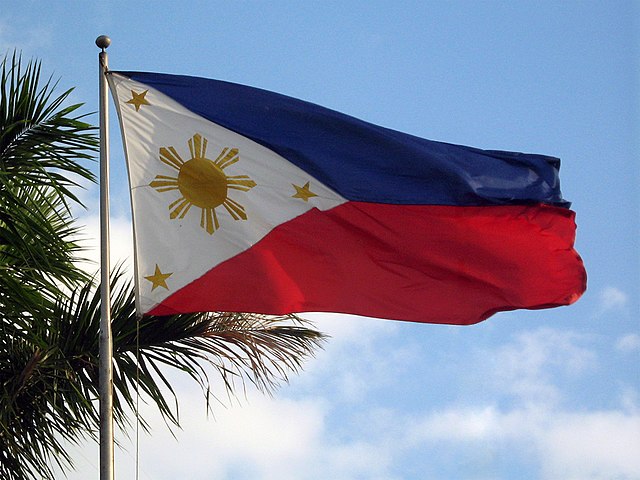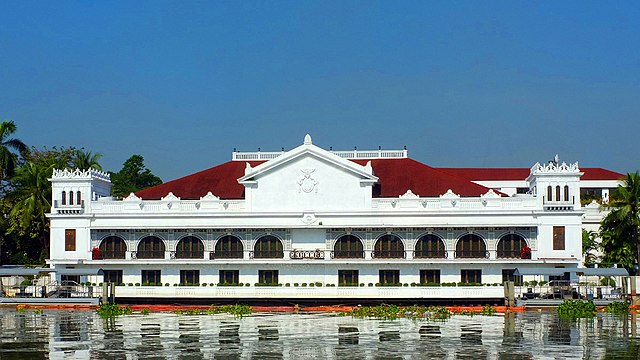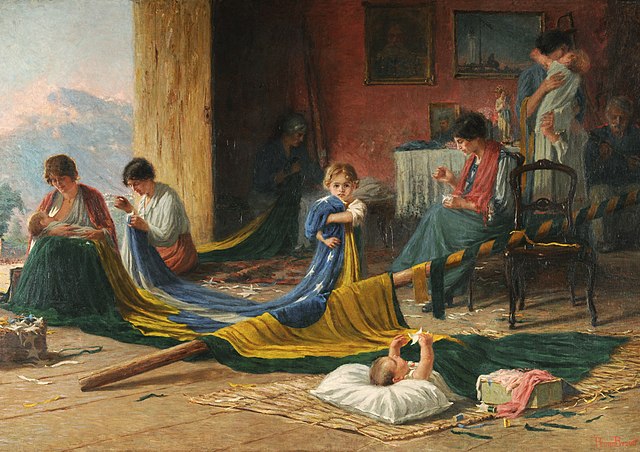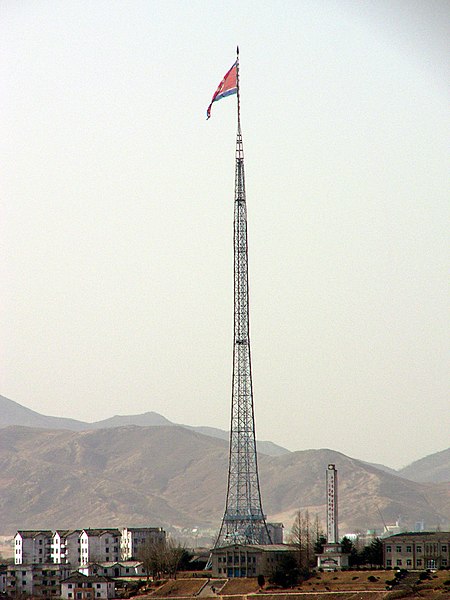The national flag of the Philippines is a horizontal bicolor flag with equal bands of royal blue and crimson red, with a white, equilateral triangle at the hoist. In the center of the triangle is a golden-yellow sun with eight primary rays, to represent the original eight provinces that rebelled against the Spanish during the 1896 Philippine Revolution. At each vertex of the triangle is a five-pointed, golden-yellow star, each of which representing one of the country's three main island groups—Luzon, Visayas, and Mindanao. The white triangle at the hoist represents liberty, equality, and fraternity. A unique feature of this flag is its usage to indicate a state of war if it is displayed with the red side on top, which is effectively achieved by flipping the flag upside-down.
Nine of the Katipunan flags often erroneously cited as part of the "Evolution of the Philippine Flag" series
President Emilio Aguinaldo conceived the Philippine national flag.
Flag of the Philippines at the Philippine International Convention Center
Image: Malacañang Palace (local img)
A national flag is a flag that represents and symbolizes a given nation. It is flown by the government of that nation, but can also be flown by its citizens. A national flag is typically designed with specific meanings for its colours and symbols, which may also be used separately from the flag as a symbol of the nation. The design of a national flag is sometimes altered after the occurrence of important historical events. The burning or destruction of a national flag is a greatly symbolic act.
Johnson's new chart of national emblems, published c. 1868. The large flags shown in the corners are the 37-star flag of the United States (flown 1867–1890), upper left; the Royal Standard of the United Kingdom, upper, right; the Russian Imperial Standard, lower left; and the French tricolore with inset Imperial Eagle, lower right. Various other flags flown by ships are shown. The Flag of Cuba is labelled "Cuban (so called)". The Chinese dragon on the
The first Italian flag brought to Florence by Francesco Saverio Altamura (1859)
A 1919 painting depicting the Brazilian flag being embroidered by a family.
The world's sixth tallest flagpole flying a 270 kg (595 lb) Flag of North Korea. It is 160 m (525 ft) in height, over Kijŏng-dong ("Peace village") near Panmunjom, the border of North Korea and South Korea.

